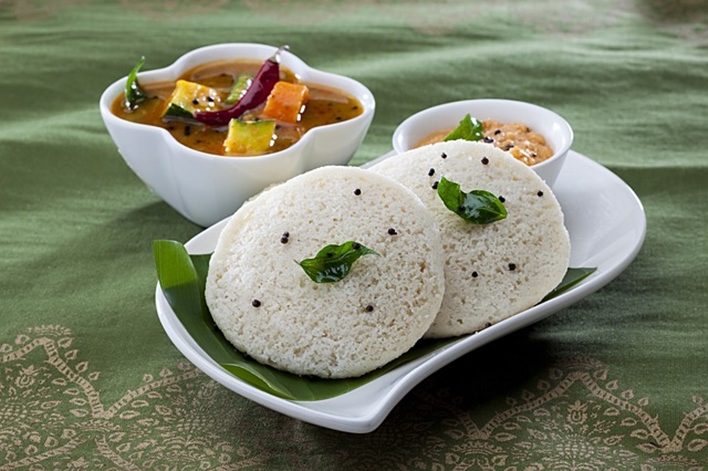When one thinks of south-Indian food, the humble idli is the first dish that comes to mind. To the uninitiated, this is a savory rice cake that is made by steaming a fermented mixture of rice and pulses. Idlis can also be made with semolina. In fact, there are many different types of idlis. Some claim that there are over 1000 different variants of this delicacy. This dish is so popular that Match 30th is celebrated every year as World Idli Day. Let us learn about this lip-smacking food and understand why is it a favorite with South Indians, especially Kannadigas?

Where did they come from?
Though the idli is today recognized as a south-Indian delicacy, it may have originated elsewhere. Many believe that the idli came to India between 800-1200CE from Indonesia where it is known as a kedli. Given the many links between south Indian rulers and Indonesian rulers, this is not very hard to believe.
Others believe that Arab traders introduced the Indian coasts to idlis. These Arab traders had strict dietary norms and hence instead of eating the local food which may not have been halaal, they ate flattened rice balls with a coconut paste.
There are a number of stories about the origins of the word ‘idli’ as well. Some historians believe that the word, idli, was derived from Iddalige, a word mentioned in the Vaddaradhane, a Kannada text by Sivakotyacharya in 920AD.
There are many who claim that it was derived from the word, Iddarika, a term mentioned in a 12th century Sanskrit text. There are some people who also claim that it was derived from a dish called Idada that was made by silk weavers from Saurashtra in 10AD. No matter where it came from and the process of making it is one that was perfected only in South-India.
How are Idlis Made?
Ingredients
- 4 cups of idli rice
- 1 cup urad dal
- Salt
- 1 teaspoon fenugreek seeds
- Optional: fermentation agent
Preparations to make idlis typically start one or two days before they are to be eaten. Rice and dal are mixed together in varying proportions and soaked overnight. They are then ground separately, mixed and allowed to ferment.
The fermented mixture is then steamed in round molds to create the delicate idlis. The size of an idli can vary from mini idlis that are barely an inch in diameter to plate-sized thatte idlis. In most cases, idlis are steamed in a metal dish but they can also be steamed in leaves.
These are known as muddle idlis. Idlis can also be fortified with vegetables, nuts etc. It is interesting to note that The Defense Food Research Laboratory (DFRL) developed special space idlis for India’s first manned space mission.

Popular Varieties of Idlis in Karnataka
- Thatte Idli
- Mini Idli
- Mudde Idli
- Goan Sanas
- Mangalorean khotigge
Are Idlis Healthy?
Idlis are very healthy. They are easily digestible and can be eaten by children and adults of all ages. This is because the fermentation process breaks down the rice and dal into simple compounds. Fermentation also introduces good bacteria to the batter.
This makes the dish act as a probiotic and also help boost immunity. In addition, idlis are rich sources of nutrients such as phytic acids, vitamin B, vitamin K, iron, and zinc. However, it has a low level of fats and carbohydrates. This makes it the ideal food for weight loss.
Also See
- Pongal Recipes
- History of Maddur Vada
- Ugadi – Celebration of Kannada New Year
- Mahasivrathir Recipes
- 5 appetizing Ugadi Recipes
- Foods from Karnataka You Probably Didn’t Even Know About
- Guru Sweets In Mysore And The History of Mysore Pak
- 10 Ways To Boost Immunity Naturally
- How To Make Herbal Hand Sanitizer At Home – The Perfect Recipe